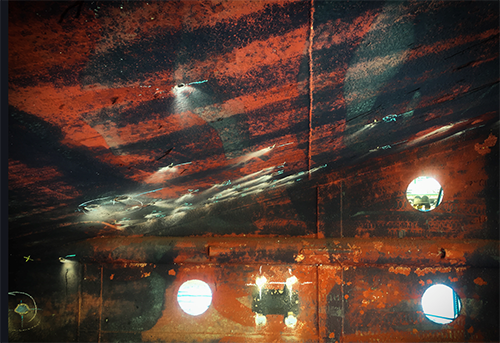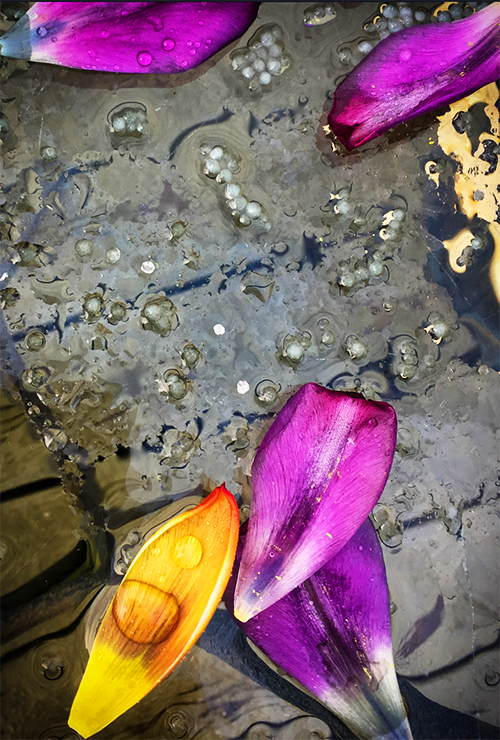Week 5
Compositional Considerations

Underneath a tuna boat.
This close up of a boat hull is an
example of a unique composition.
Welcome to Week 5. This week, you will learn more about composition and how to take what you have learned in the first half of class to the next level. So far you have learned about the basic design elements and techniques; this forms the important groundwork upon which you can build your foundation in the camera arts.
This week you will focus on one subject, and photograph this subject from multiple angles and vantage points, to produce four well-composed, yet distinctly unique, images. Your subject must be three dimensional and can be an indoor or outdoor environment, place, or object. It is strongly recommended that you photograph outside whenever possible and use available light, avoiding direct flash and indoor lighting. If you must photograph indoors, check your white balance so you have a true white in your highlights. Be sure to read through the lecture materials this week before you begin, and to shoot a large pool of images from which to select your strongest ones. In addition to the readings, there are lectures on compositional strategies and best practices for printing your images.
Weekly Objectives
-
Learn proper digital camera operation.
-
Learn color evaluation and color correction techniques.
-
Explore experimental lighting and digital special effects.
-
Learn proper resample techniques.
-
Learn basic digital image enhancements using image editing programs.
-
Present digital photographs using basic design principles.
Activities
Readings
-
A Short Course in Digital Photography
-
Chapter 6: Printing and Display
-
Web Resources: Review two articles below from Photography Composition Library Articles
-
An Eye for Composition by Gary Stanley
-
Breaking all the Rules by Gloria Hopkins
Activities
-
Discussion 5
-
Shooting Assignment 5
-
Quiz 5
Learning to See as a Photographer

A close-up photograph of tulip
petals showing a unique composition.
This week, you will explore composition more closely and experiment with angles, proximities, focus points, lighting, and white balance. In this assignment, you will refine your eye as you work on composition.
The word photography means “writing with light.” You can use the natural light of the sun, the artificial light of a light bulb, or the short burst of light created by an electronic flash to make your photographic images. Each of these sources of light can be used as a creative tool. It is important to understand the qualities of light for crafting creative and dynamic images.
Some photographers choose to work in a studio, and others prefer working on location. Artificial or natural light sources can be used to illuminate the subject in either of these environments. Regardless of the light source, the basic principles of exposure apply when taking pictures.
This week, you will photograph one subject and submit four distinctly different photographs. Choose a three-dimensional subject or an indoor or outdoor environment to photograph. Take several photos of your chosen subject, using different camera angles, proximities, focal points, exposure settings, or white balance. Use a tripod when necessary.
Before you begin, be sure to view the assignment presentation, read the lecture on compositional considerations, and look at this week's web resources.
Compositional Considerations
Select the play icon, or use the Enter key to watch the video.
This video takes a close look at the Week 5 assignment. The video contains example images that will help you successfully complete the assignment.
Composition
Select the play icon, or use the Enter key to watch the video.
This video introduces strategies for completing the composition assignment for this week.
Printing
Select the play icon, or use the Enter key to watch the video.
This video discusses key elements of printing and essential printing concepts, such as color modes and dpi.
Conclusion
This week helped you hone your compositional skills and gave you the opportunity to take your photography to the next level. You learned about the importance of warming up with your subject as well as the basics of printing and proofing your images. Next week, you will learn how to turn the ordinary into the extraordinary with your camera and image editing software.